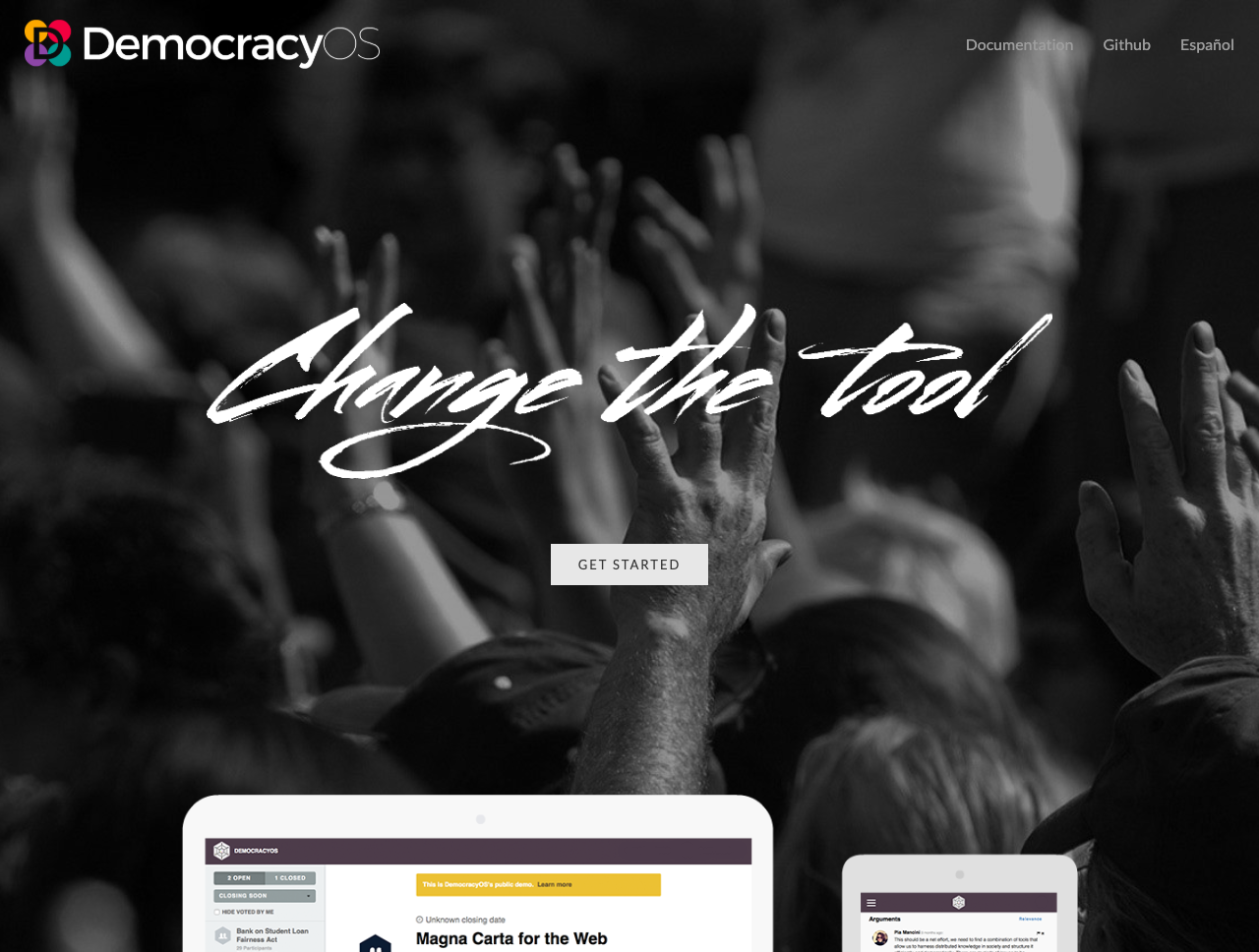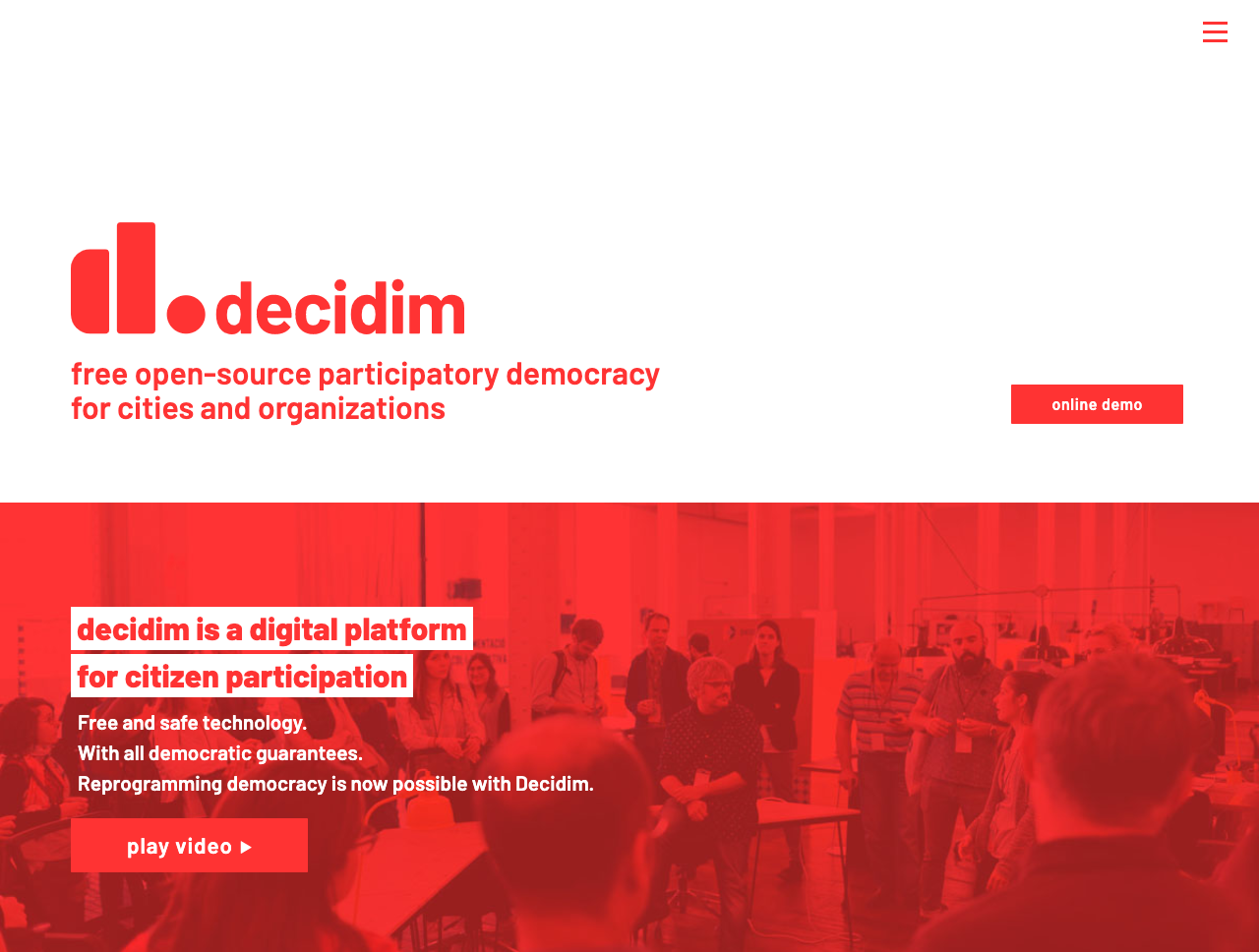Over the last decade a range of digital tools have been built for a common purpose: to help groups of politically minded people to make decisions together. Typically, these tools allow political parties or campaign groups to set up their own private deliberation websites, open only to members of particular communities. Some of the best known tools in this space are Loomio, DemocracyOS, Decidim, and LiquidFeedback.
The websites powered by these tools offer users a mixture of debating, proposing, and voting functions that give them ways to voice opinions, propose motions, debate ideas, and vote to find positions that will command the respect of majorities. The ultimate purpose of these tools is to help groups of people be more successful and effective at coordinating collective action.
These tools are not new, but over the last half decade, they have been finding their way into the internal decision-making machinery of increasingly more powerful political movements (Bennett et al. 2017).
Use of these tools started at the margins of mainstream politics. “Pirate Party” political movements in various European countries were early adopters of a tool that enabled them to practice a form of party governance called “Liquid Democracy.” The Pirate Party has never achieved more than modest levels of political success in national elections. However, over the last five years, these technologies have found their way closer to delivering significant power through their use by major breakthrough parties such as Podemos in Spain and, most significantly of all, the Five Star Movement in Italy, which is now part of the governing coalition of the country.
Adopting these tools is not a trivial or an easy choice for parties. Their open and egalitarian design cuts directly against traditional party norms of control, patronage, and hierarchy, and they pose a range of difficult questions to parties that use them, such as:
- Who gets to propose policies and candidates in an online space, and who doesn’t?
- Who gets to vote on these policies and candidates?
- Are online votes binding or advisory?
- What processes must be put in place to prevent political opponents from using these tools to destroy parties or movements?
So profound are the challenges these tools represent that they have not caught on with traditional political parties, making them different from social media tools like Twitter and Facebook – modern tools that meet timeless political party needs for propaganda and recruitment.
Previously, in a period where traditional parties were dominant, these kinds of novel deliberation tools could be safely labeled as marginal. However, with new political parties disrupting and usurping older parties in many countries, it seems likely that the spread of these tools will continue. For reasons of electoral mathematics, these tools will likely have a significant role only in countries electing governments through proportional electoral systems. The impact is still modest, as a proportion of all party systems 10worldwide. Nevertheless, the use of these tools is expected to grow steadily.
One final observation is offered. These participative digital tools are not simply about setting national policy priorities or agreeing on national election candidates. Research for this study uncovered evidence of these tools being used to help parties develop and agree on policy at a local level, including one claim these tools are now operational in “dozens” of cities in Spain. In one notable circumstance, an Italian city mayor is using a deliberation system that organized party business during an election campaign to help determine post-election local policy. This poses an interesting question about whether this innovation brings open policy making to more people, or actually closes it down as single-party digital systems start to be used in favor of more general public consultations.
In conclusion, as political parties everywhere struggle to deal with a drop of trust in institutions, it is likely that tools will continue to grow in popularity that help members and supporters believe they have more control over their parties and movements. Correctly deployed, these tools offer party members an alternative to relying solely on the goodwill of party leaders. That is an offer that is likely to remain attractive to many citizens for the foreseeable future.
-
10: Proportional electoral systems tend to favor the emergence of multiparty and consensus systems (Kriesi 2015), thus increasing the likelihood of new parties emerging from movements favoring more intraparty democracy. It is no coincidence that the majority of parties experimenting with these technologies comes from countries with some degree of proportionality in their electoral systems (e.g., Pirate Party in Germany and Iceland, Demoex in Sweden, Podemos in Spain, and the Five Star Movement in Italy). ↩



